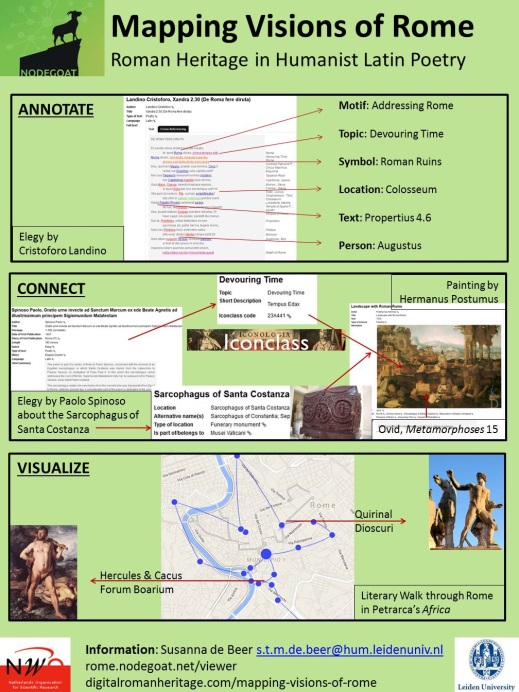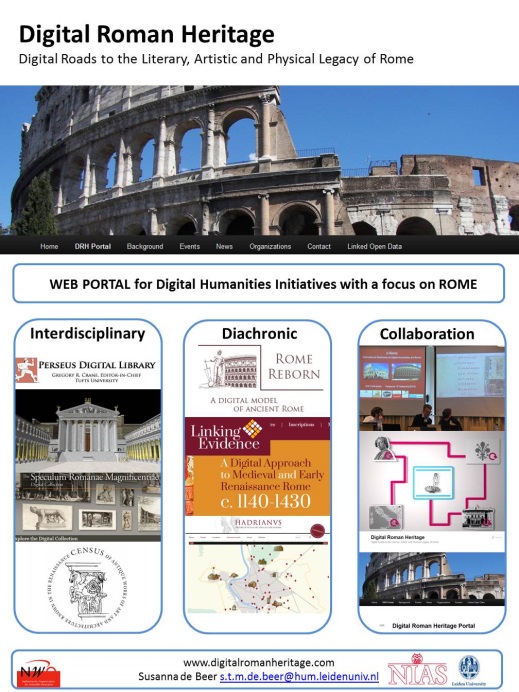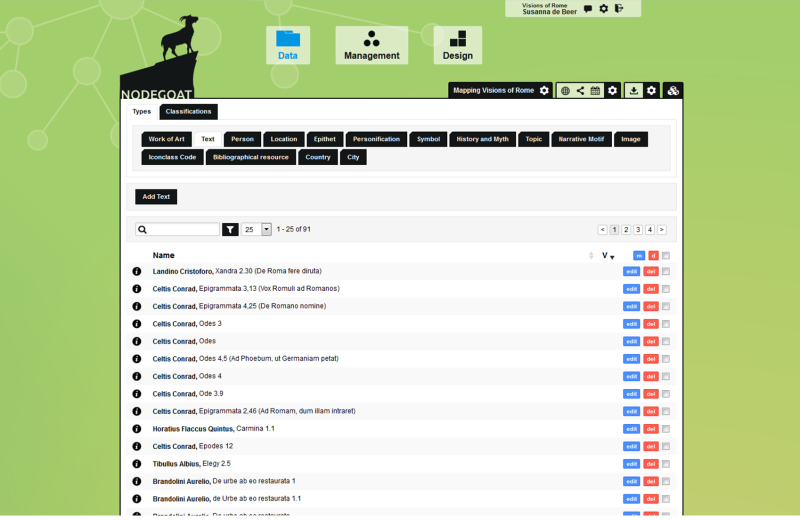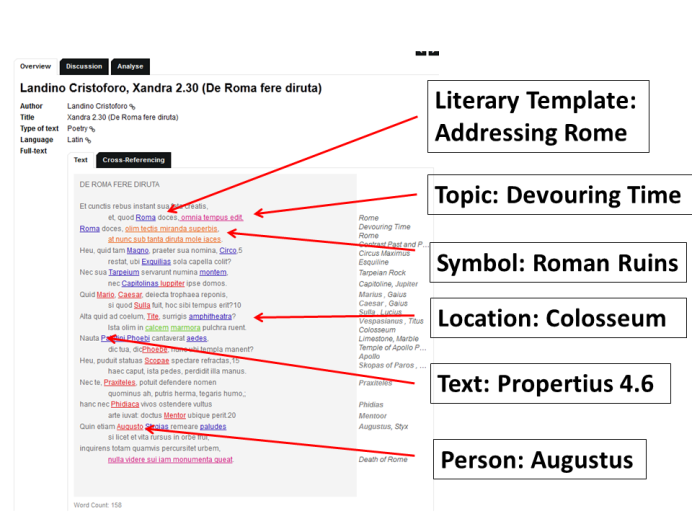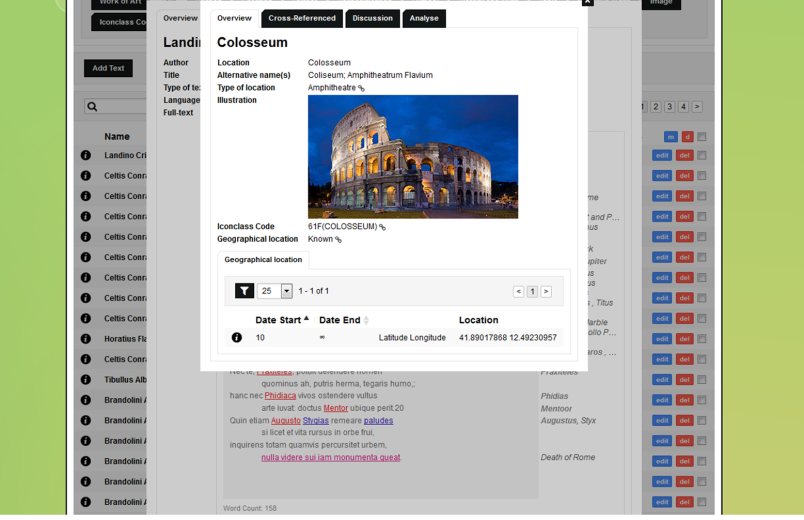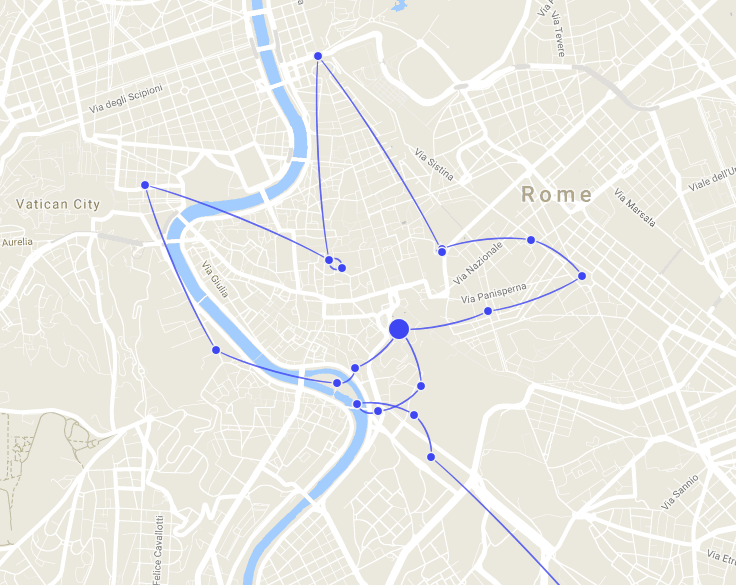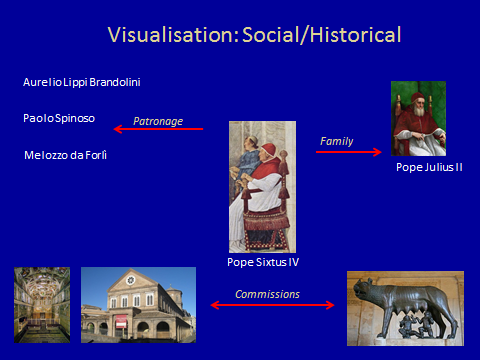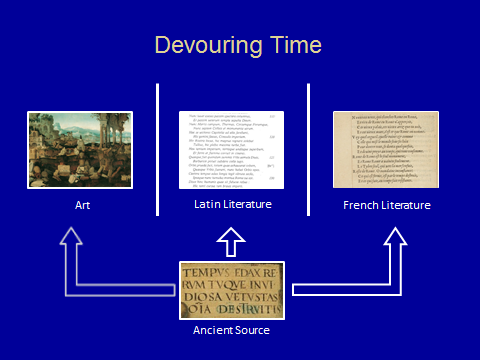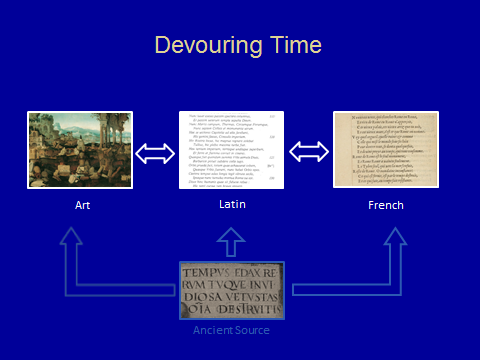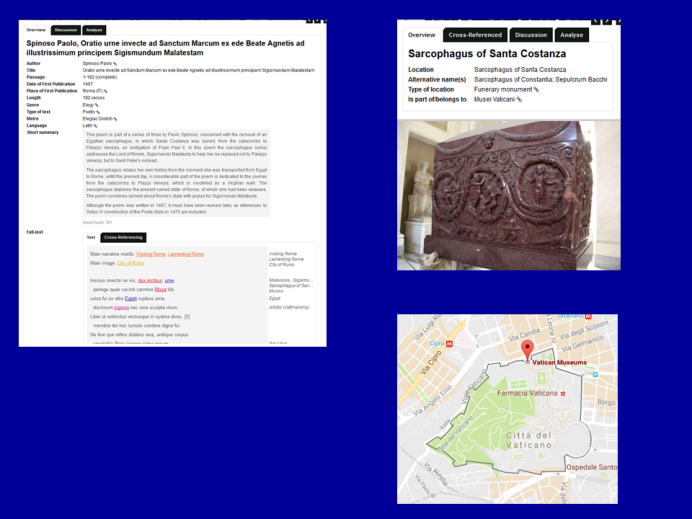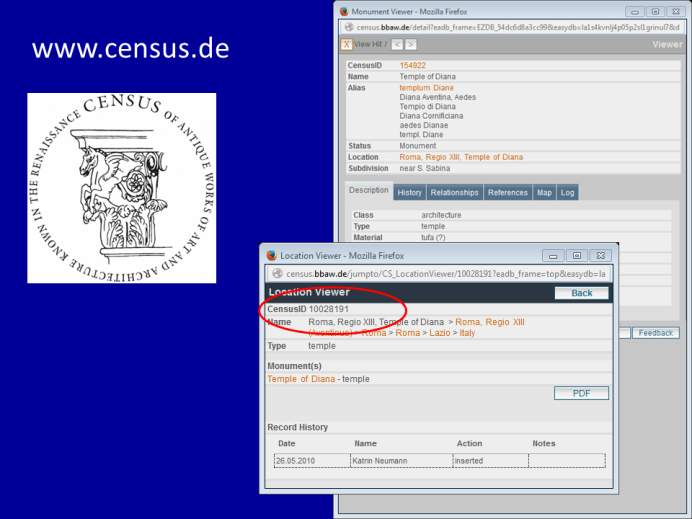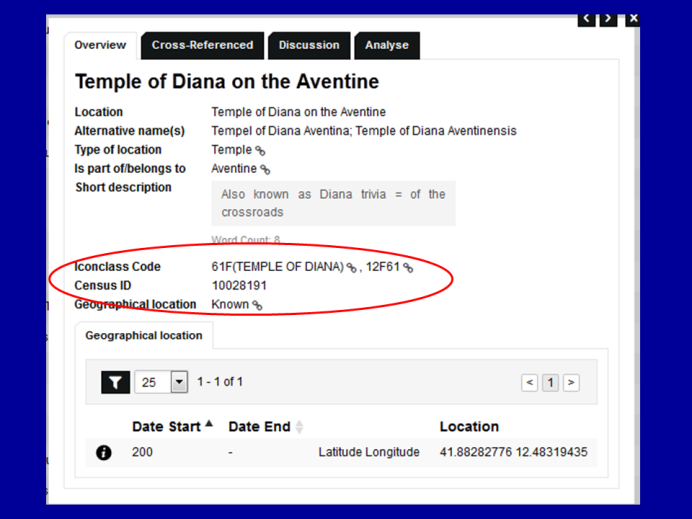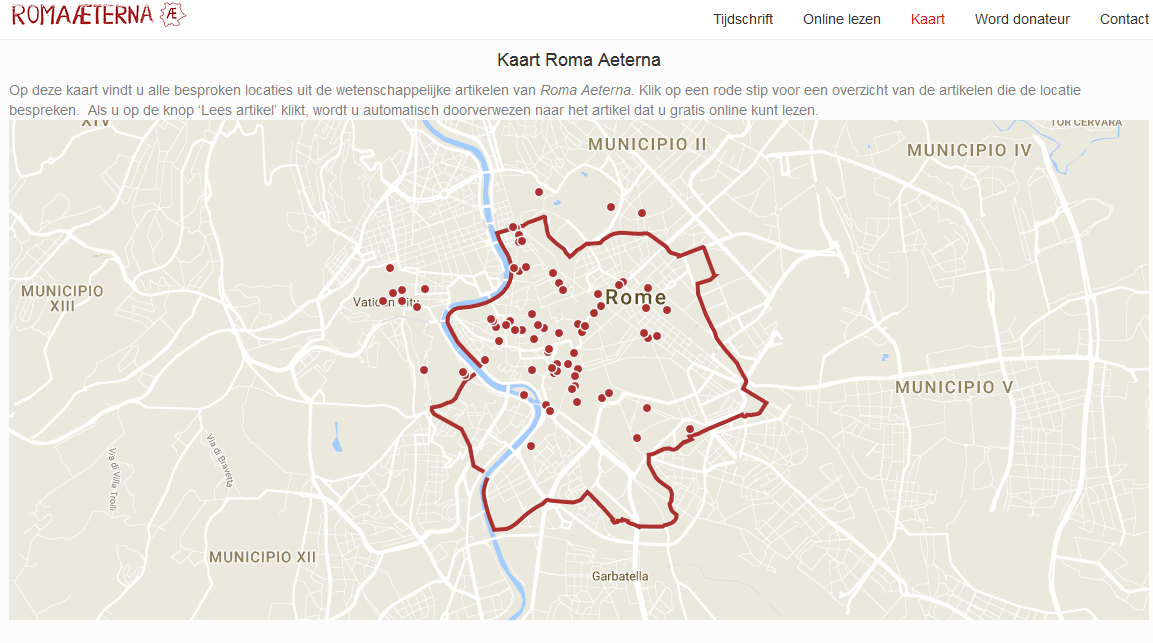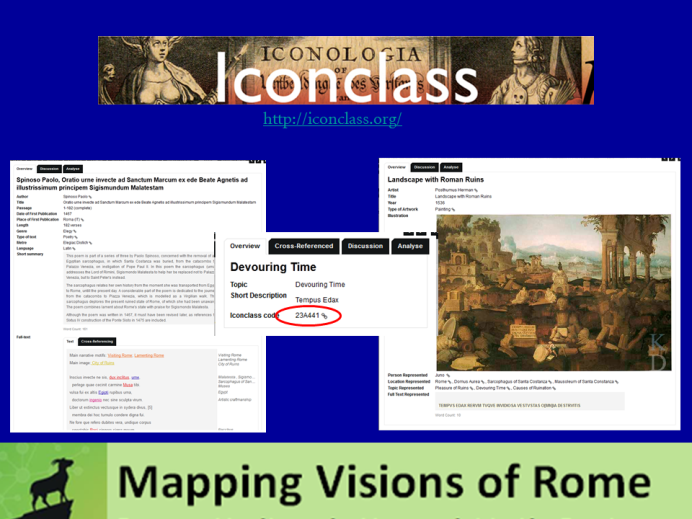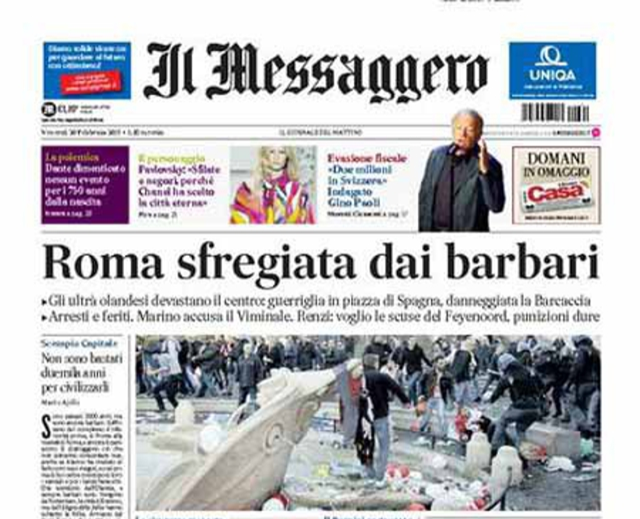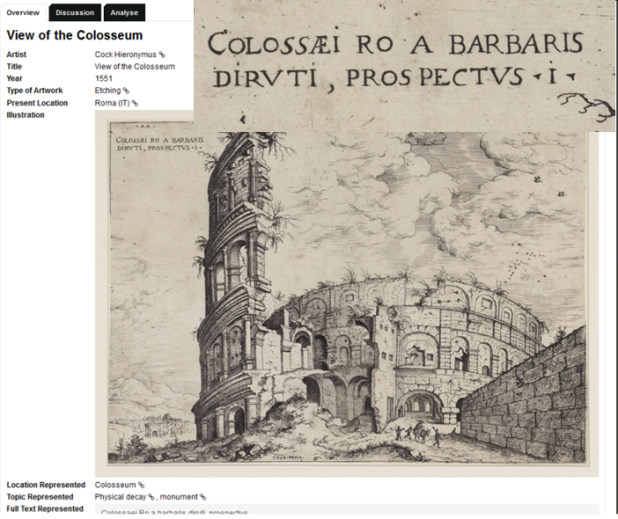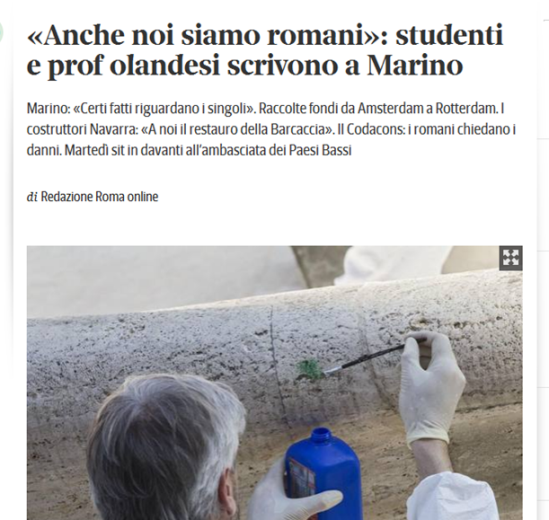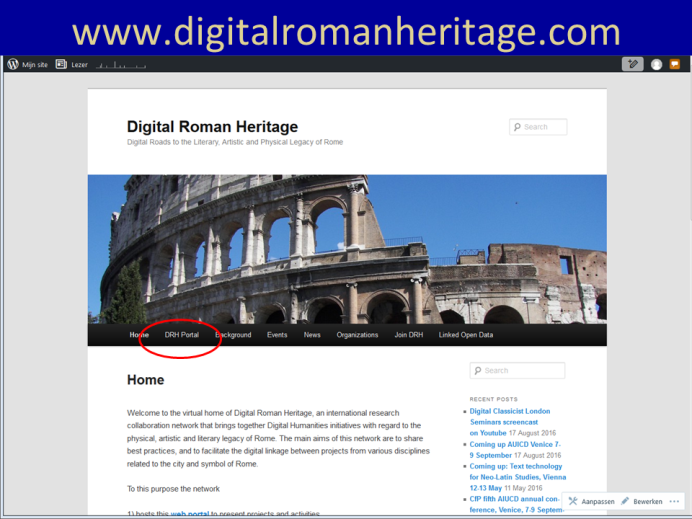-
Beller, Manfred e Joseph Th. Leerssen, a cura di. Imagology. The cultural construction and literary representation of national characters. A critical survey. Amsterdam; New York: Rodopi, 2007.
-
Bianchi, Rossella. Paolo Spinoso e l’umanesimo romano nel secondo Quattrocento. Roma: Edizioni di storia e letteratura, 2004.
-
Bodard, Gabriel e Matteo Romanello. Digital classics outside the echo chamber. Teaching, knowledge exchange and public engagement. Londra: Ubiquity Press, 2016.
-
Bonnett, John. A Plea for design: historians, digital platforms and the mindful dissemination of content and concepts.
Journal of the canadian historical association / revue de la société historique du Canada 25, num. 2 (2014): 189–231. https://doi.org/10.7202/1032846ar.
-
Ciotti, Fabio, Maurizio Lana e Francesca Tomasi. TEI, ontologies, linked open data: geolat and beyond.
Journal of the Text Encoding Initiative, num. 8 (2014). https://doi.org/10.4000/jtei.1365.
-
Coffee, Neil, Jean-Pierre Koenig, Shakthi Poornima, Roelant Ossewaarde, Christopher Forstall e Sarah Jacobson. Intertextuality in the digital age.
Transactions of the american philological association 142, num. 2 (2012): 383–422. https://doi.org/10.1353/apa.2012.0010.
-
De Beer, Susanna. In the footsteps of Aeneas. Humanist appropriations of the virgilian walk through Rome in Aeneid 8.
Humanistica lovaniensia. Journal of neo-Latin studies 66 (2017): 23–55.
-
De Beer, Susanna. Reuse, repeat, recycle! An intratextual approach to the economics of poetry.
In Economics of poetry. Efficient techniques of producing neo-latin verse, a cura di Bernhard Schirg e Paul Gwynne, 856–64. Francoforte: Peter Lang, Forthcoming.
-
De Beer, Susanna. Rom: Symbolischer Ort.
In Der neue pauly. 2. Staffel, band 9: Renaissance-humanismus. Lexikon zur antikerezeption, a cura di Michael Landfester, 9:856–64. Stuttgart: Metzler, 2014.
-
Drucker, Johanna. Graphical approaches to the digital humanities.
In A New Companion to digital humanities, a cura di Susan Schreibman, Ray Siemens e John Unsworth. Chichester: Wiley-Blackwell, 2015.
-
Drucker, Johanna. Humanistic theory and digital scholarship.
In Debates in the digital humanities, a cura di Matthew K. Gold. Minneapolis: University of Minnesota Press, 2012. http://dhdebates.gc.cuny.edu/debates/text/34.
-
Edmond, Jennifer. Collaboration and infrastructure.
In A new companion to digital humanities, a cura di Susan Schreibman, Ray Siemens e John Unsworth. Chichester: Wiley-Blackwell, 2015.
-
Edwards, Catharine. Writing Rome. Textual approaches to the city. Roman literature and its contexts. Cambridge: Cambridge university press, 1996.
-
Erickson, Ansley T. Historical research and the problem of categories: reflections on 10,000 digital note cards.
In Writing history in a digital age, a cura di Kristen Nawrotzki e Jack Dougherty, 133–45. Ann Arbor: University of Michigan Press, 2013. https://quod.lib.umich.edu/d/dh/12230987.0001.001/1:7/--writing-history-in-the-digital-age?g=dculture;rgn=div1;view=fulltext;xc=1.
-
Flanders, Julia e Fotis Jannidis. Data modeling.
In A new companion to digital humanities, a cura di Susan Schreibman, Ray Siemens e John Unsworth. Chichester: Wiley-Blackwell, 2015.
-
Jockers, Matthew. Macroanalysis. Digital methods and literary history. Urbana: University of Illinois Press, 2013.
-
Kytzler, Bernhard. Roma aeterna. Lateinische und griechische romdichtung von der antike bis in die gegenwart. Zurigo: Artemis, 1972.
-
Landino, Cristoforo. Carmina omnia. A cura di Alexander Perosa. Firenze: Bibliopolis libreria editrice, 1939.
-
Leerssen, Joseph Th. The Rhetoric of National Character: A Programmatic Survey.
Poetics Today 21, num. 2 (2000): 267–92.
-
Manca, Massimo, Linda Spinazzè, Paolo Mastandrea, Luigi Tessarolo e Federico Boschetti. Musisque deoque: text retrieval on critical editions.
Journal for language technology and computational linguistics 26 (2011): 129–40.
-
McCarty, Willard. Becoming interdisciplinary.
In A new companion to digital humanities, a cura di Susan Schreibman, Ray Siemens e John Unsworth. Chichester: Wiley-Blackwell, 2015.
-
McGann, Jerome. Marking texts of many dimensions.
in A new companion to digital humanities, a cura di Susan Schreibman, Ray Siemens e John Unsworth. Chichester: Wiley-Blackwell, 2015.
-
McGillivray, Barbara. Methods in latin computational linguistics. Leiden; Boston: Brill, 2014.
-
Moretti, Franco. Distant reading. Londra: Verso, 2013.
-
Oldman, Dominic, Martin Doerr e Stefan Gradmann. Zen and the art of linked data: new strategies for a semantic web of humanist knowledge.
In A new companion to digital humanities, a cura di Susan Schreibman, Ray Siemens e John Unsworth. Chichester: Wiley-Blackwell, 2015.
-
Pieper, Christoph. Elegos redolere vergiliosque sapere. Cristoforo Landino’s ‘Xandra’ zwischen liebe und gesellschaft. Hildesheim: Olms, 2008.
-
Pierazzo, Elena. Textual scholarship and text encoding.
In A new companion to digital humanities, a cura di Susan Schreibman, Ray Siemens e John Unsworth. Chichester: Wiley-Blackwell, 2015.
-
Presner, Todd e David Shepard. Mapping the geospatial turn.
In A new companion to digital humanities, a cura di Susan Schreibman, Ray Siemens e John Unsworth. Chichester: Wiley-Blackwell, 2015.
-
Ramsay, Stephen. Databases.
In A companion to digital humanities, a cura di Susan Schreibman, Ray Siemens e John Unsworth. Oxford: Blackwell, 2004. http://www.digitalhumanities.org/companion/view?docId=blackwell/9781405103213/9781405103213.xml&chunk.id=ss1-3-3&toc.depth=1&toc.id=ss1-3-3&brand=default.
-
Rigney, Ann. When the monograph is no longer the medium: historical narrative in the online age.
History and theory 49, num. 4 (2010): 100–117. https://doi.org/10.1111/j.1468-2303.2010.00562.x.
-
Schmidt, Desmond. Towards an interoperable digital scholarly edition.
Journal of the Text encoding initiative, num. 7 (2014). https://doi.org/10.4000/jtei.979.
-
Schreibman, Susan, Ray Siemens e John Unsworth, a cura di. A new companion to digital humanities. Chichester: Wiley-Blackwell, 2015.
-
Simon, Rainer, Peter Pilgerstorfer, Leif Isaksen e Elton Barker. Towards semi-automatic annotation of toponyms on old maps.
E-Perimetron 9, num. 3 (2014): 105–12.
-
Sinclair, Stéfan e Geoffrey Rockwell. Text analysis and visualization: making meaning count.
In A New companion to digital humanities, a cura di Susan Schreibman, Ray Siemens e John Unsworth. Chichester: Wiley-Blackwell, 2015.
-
Sperberg-McQueen, C. M. Classification and its structures.
In A new companion to digital
humanities, a cura di Susan Schreibman, Ray Siemens e John Unsworth. Chichester: Wiley-Blackwell, 2015.
-
“Text analysis and visualization: making meaning count,” n.d.
-
Thompson Klein, Julie. Interdisciplining digital humanities. Michigan: University of Michigan Press, 2015.
-
Van Den Heuvel, Charles, Pim Vam Bree, Geert Kessels e Leonor Alvarez Frances. Mapping notes and nodes: building a multi-layered network for a history of the cultural industry.
Sydney, Australia, 2015. http://dh2015.org/abstracts/xml/HEUVEL_Charles_van_den_Mapping_Notes_And_Nodes__B/HEUVEL_Charles_van_den_Mapping_Notes_And_Nodes__Buildin.html.
-
Van Luijn, Nathasja, Christoph Pieper e Mark Oldenhave. De vereeuwigde stad. een literaire reisgids door het antieke Rome. Amsterdam: Amsterdam University Press, 2018.
-
Van Peteghem, Julie. Digital readers of allusive texts: ovidian intertextuality in the ‘Commedia’ and the digital concordance on ‘intertextual Dante.’
Humanist studies & the digital age 4, num. 1 (2015): 39–59. https://doi.org/10.5399/uo/hsda.4.1.3584.
-
Van Zundert, Joris. Screwmeneutics and hermenumericals: the computationality of hermeneutics.
In A new companion to digital humanities, a cura di Susan Schreibman, Ray Siemens e John Unsworth. Chichester: Wiley-Blackwell, 2015.
-
Vitalis, Janus. Sacrosanctae romanae ecclesiae elogia. Roma, 1553.
